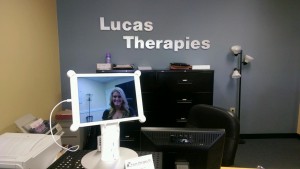Telepresence Robots Turn Video Collaboration Into a Workforce Multiplier
 Robotic telepresence and video collaboration have been a successful combination for several years now, gaining traction in applications such as telemedicine and distance learning. The engagement that results from enabling remote participants to control their point of view is clear, as is the productivity gain from being in more than one place at a time. Now, as these applications become more mainstream, we’re seeing new and exciting applications for robotic telepresence that have been right in front of us for years.
Robotic telepresence and video collaboration have been a successful combination for several years now, gaining traction in applications such as telemedicine and distance learning. The engagement that results from enabling remote participants to control their point of view is clear, as is the productivity gain from being in more than one place at a time. Now, as these applications become more mainstream, we’re seeing new and exciting applications for robotic telepresence that have been right in front of us for years.
“There is one glaringly obvious application in particular for Kubi from Revolve Robotics, for example, where a robotic cradle for a standard tablet, to let two people do the work of four: the receptionist role at Lucas Therapies in Roanoke, Virginia. One of the largest outpatient physical therapy practices in the state, Lucas Therapies has five locations across Roanoke and Salem Virginia that have served the needs of their communities for more than two decades. The general process for using Lucas’ facilities is to come in through the main entrance and then check in with the front desk. Once checked in, the patient moves on to their assigned professional and/or activity.
In reviewing their receptionists’ capabilities, Lucas Therapies noted that each receptionist checked in around 25 patients a day. Beyond that, these individuals had a significant amount of down time. When informed of this circumstance, management tasked IT with identifying a solution to this issue of wasted resources. This presented a conundrum; how could you reduce head count while maintaining quality hospitality? The lead considered a video conferencing solution, but realized how cold and impersonal this would appear, particularly to Lucas Therapies’ audience of older patients. They realized it needed to be much more than a static video screen; the solution required the ability to interact with patients at the other end.
After some research, Lucas Therapies’ IT lead settled on robotic telepresence as a solution, combined with a scanner and credit card reader that could electronically route payments and forms to the back office. Instead of a “roaming” robot that could drive around reception, they chose Kubi, a solution that does not roam, but instead gives the remote participant the fluid ability to look around the room they are viewing via tilt and pan capabilities. In fact, for face to face motion, it’s been reported that pan and tilt robots like Kubi are more natural and intuitive than roaming robots.
What was different about Kubi for Lucas Therapies? Japanese for neck, Kubi and solutions like it leverage the conferencing capabilities of today’s tablets by introducing a robotic platform or cradle on which the tablet sits. The resulting telepresence robot is then “driven” by the remote video-conferencing participant. Kubi thus turns passive video conferencing callers into active participants, as remote callers use Kubi to “look around” the room and actively engage with meeting participants. In this case, with physical therapy patients.
This approach to robotic telepresence turned out to be ideal for Lucas Therapies. Instead of a physical receptionist in each office, Lucas has one person in the back office available on Kubi in their reception areas, checking in more than one hundred people per day across multiple locations around the state. A second person processes forms and payments. What’s more, these receptionists are capable of performing other duties at headquarters when not checking patients. The patients themselves have responded with some curiosity but overall have embraced the new approach. The net result of the robotic telepresence deployment has been more than a 2.5x workforce multiplier.
The obviously positive results should be a wake up call for anyone that is serving SMBs and enterprises with receptionists who could do much more with their time, serving multiple reception area from one large monitor.. In fact, this represents an entirely new market for most AV vendors – one that has remained largely untapped, but which has been right before our eyes. For years, we’ve seen empty reception desks, but now there could be a telepresence robot manned by a human greeting us. The key remains infusing standard collaboration with the means of engagement a robot provides. In the case of Kubi, that ability to look around the room and provide a more “human” interaction makes all the difference.

